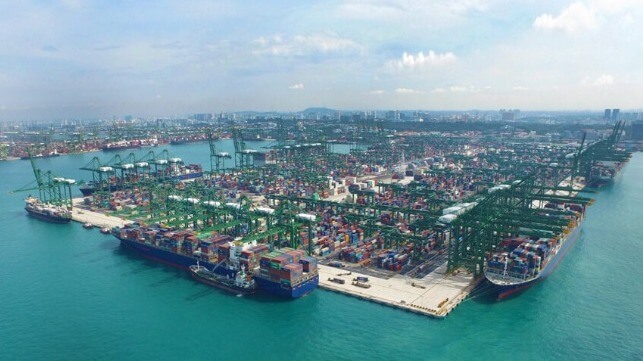Report: Singapore Port Congestion Mounts as Ships Divert from Red Sea

Major carriers have repeatedly warned of the impact the Red Sea diversions are having on their services. In a report from Hong Kong-based market intelligence firm Linerlytica, they warn the diversions are causing the resurgence of port congestion while warning the situation is likely to get worse in the coming month.
Analysts have warned of the extra transit times as vessels are forced to divert around South Africa on their normal Asia to Europe runs. Now with the Houthi threatening further distance, including into the Indian Ocean, carriers have been warned to ensure that their vessels increase the diversions meaning even longer distances and greater travel times.
Linerlytica paints a picture of inter-related issues causing the latest congestion. According to their analysis, Southeast Asia is the worst bottleneck accounting for more than a quarter (26 percent) of congestion while North-Eastern Asia is close behind at 23 percent.
Singapore, however, they believe is the current epicenter of the backlogs. Linerlytica calculates that there are up to 450,000 TEU in the queue for shipping. They warn that vessels are now having to wait up to seven days for a berth at Singapore, versus normal conditions where at most a vessel had a half-day wait for a berth.
Contributing to the backlog is the dramatic increase in transit times for containers coming out of Asia. It has caused the shipping companies to push every available vessel into service and according to Linerlytica will force them to extend their charters.
Another market intelligence firm, Sea-Intelligence recently reported that transit times on the most popular routes between Asia and Europe were all seeing increases in times but that the worst is to the Mediterranean ports, where in many cases carriers have been transshipping containers through intermedia ports since they are diverting away from the Suez Canal. According to Sea-intelligence, transit times during the first three months of 2024 increased on average by 39 percent on the most popular route pairings between Asia and the Mediterranean while it also only slightly less with a 15 percent increase for the most popular port pairings between Asia and Northern Europe. They report it is worst for the ports in the Eastern Mediterranean where the average minimum transit time increased by 61 to 63 percent, while to the Central Mediterranean average transit times are up by 39 to 40 percent.
The growing congestion at Singapore is also causing other effects says Linerlytica. Vessels are being forced to wait outside associated anchorages and further from port as in the case of Singapore. Carriers trying to manage the longer transit times and growing delays have also elected to skip less busy ports such as Port Klang, Malaysia meaning boxes are piling up or being rerouted to ports such as Singapore which is then strained by the increased volumes. The increase in congestion is also causing vessel bunching at points along the routes.
Globally, Linerlytica estimates that two million TEU of ship capacity, or seven percent of the global fleet, is now caught in congestion.
As these pressures grow, it is also contributing to sudden increases in shipping costs. Several reports have warned that prices are returning to pandemic levels as a new wave of port congestion moves through segments of the market.
